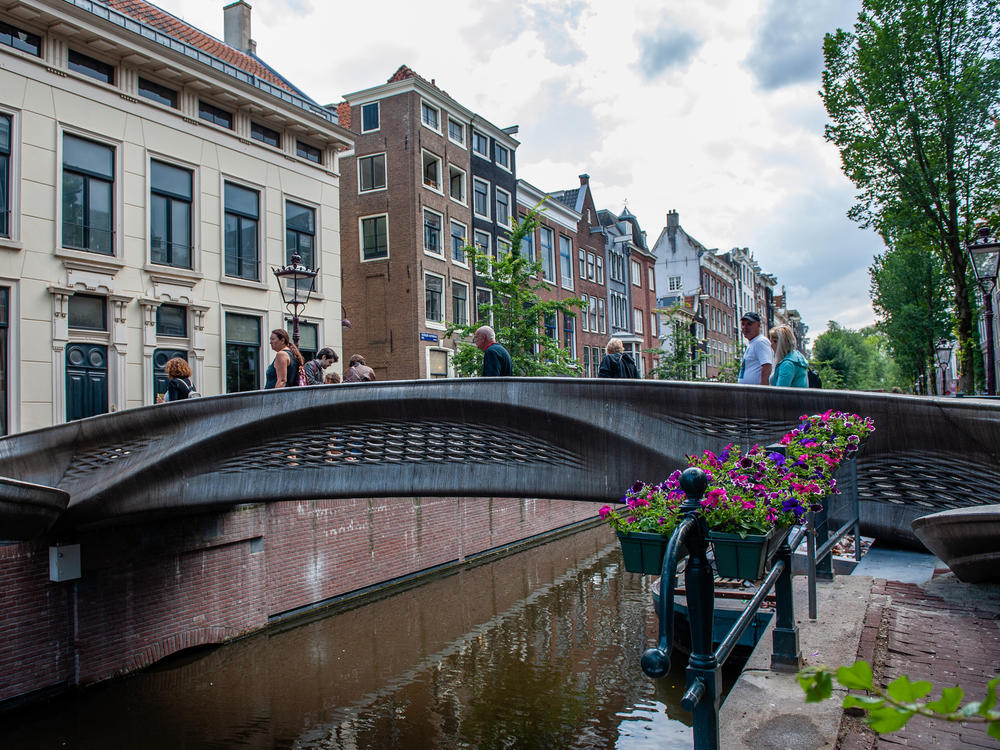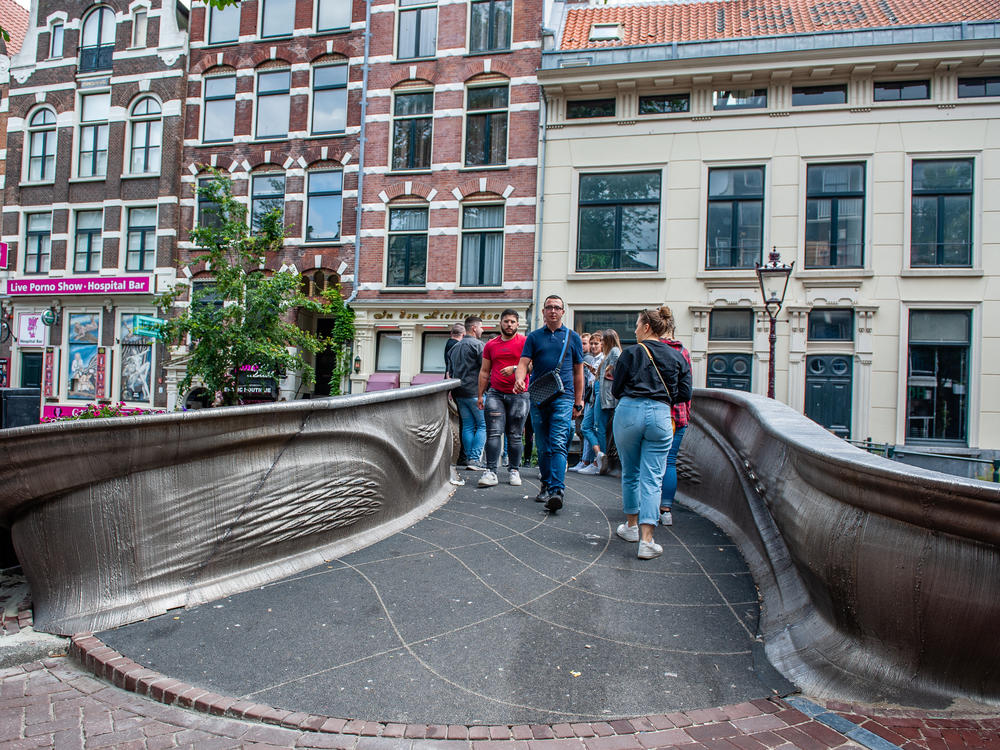Section Branding
Header Content
Check Out The First 3D-Printed Steel Bridge Recently Unveiled In Europe
Primary Content
Following four years of planning and research, the world's first 3D printed footbridge recently opened to the public in Europe.
The almost 40-foot bridge, unveiled last month, was built by Dutch company MX3D and will serve as a "living laboratory" in Amsterdam's city center.
Researchers and engineers at Imperial College London were able to 3D-print the bridge — which now serves pedestrians and cyclists crossing Amsterdam's Oudezijds Achterburgwal canal.
"A 3D-printed metal structure large and strong enough to handle pedestrian traffic has never been constructed before," said Imperial College London professor Leroy Gardner in a news release.
Designers first created the concept for the bridge in 2015, with the goal of making an "exceptionally efficient structure," emphasizing both simplicity and safety, according to Popular Mechanics.
"We have tested and simulated the structure and its components throughout the printing process and upon its completion, and it's fantastic to see it finally open to the public," Gardner said.
Now that the bridge is unveiled, researchers at Imperial College London will begin collecting data in real-time to monitor how it behaves with foot and cyclist traffic.
"Research into this new technology for the construction industry has huge potential for the future," said Imperial College London co-contributor Dr. Craig Buchanan. "It has been fascinating and we are delighted that the structure is now ready to be used."
Copyright 2021 NPR. To see more, visit https://www.npr.org.


